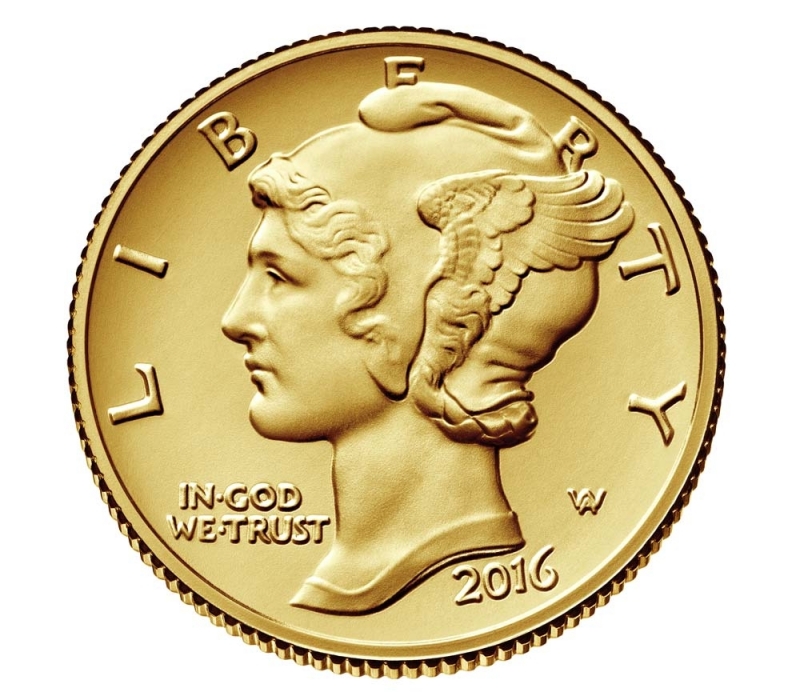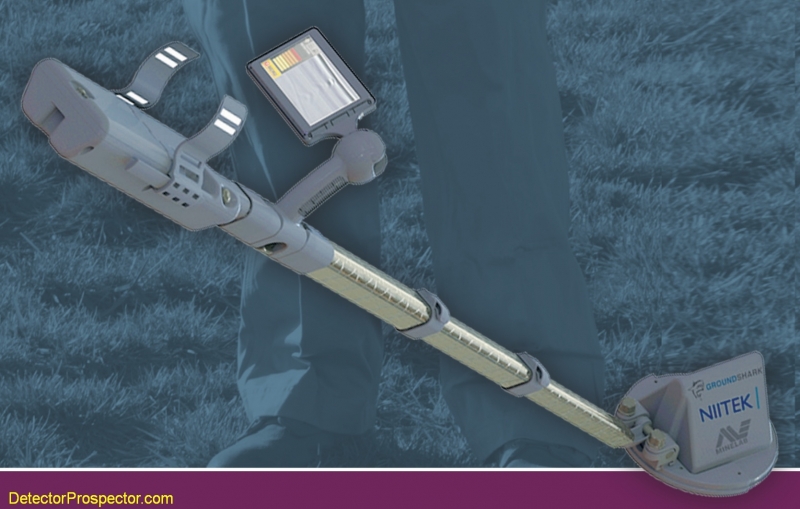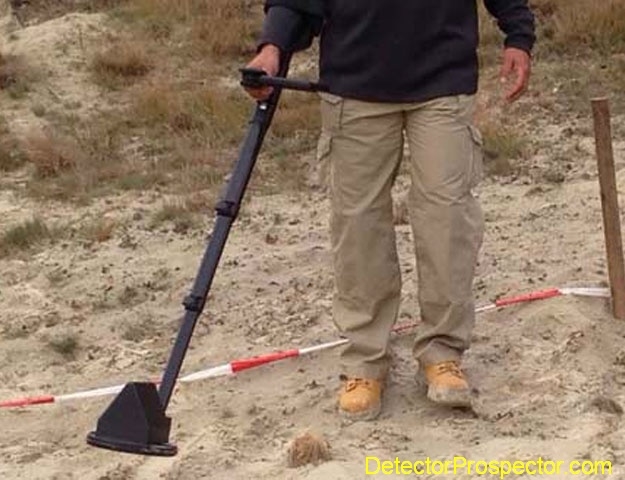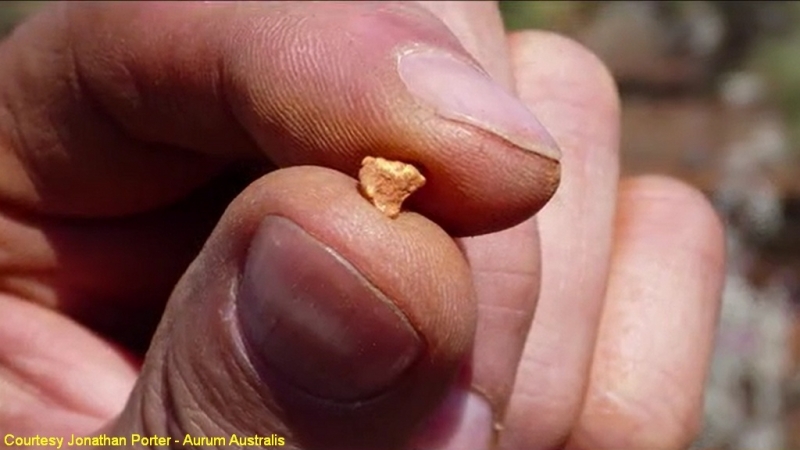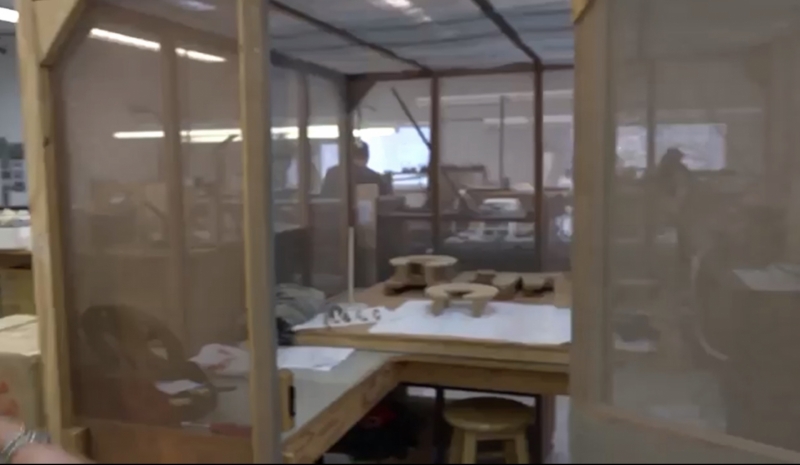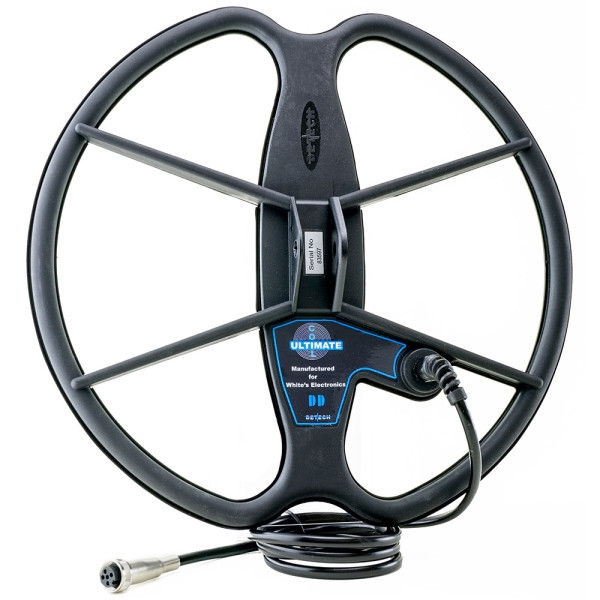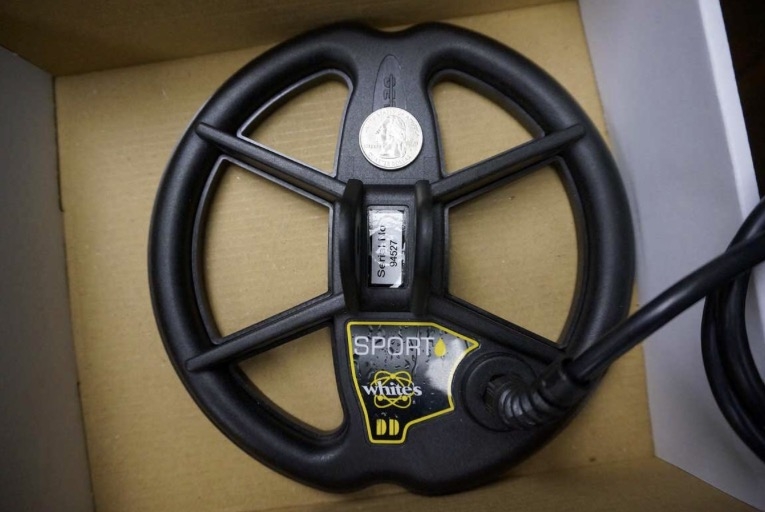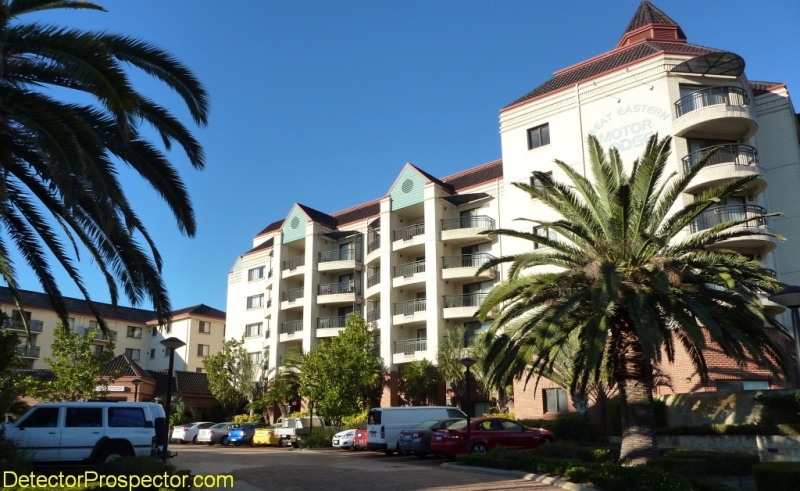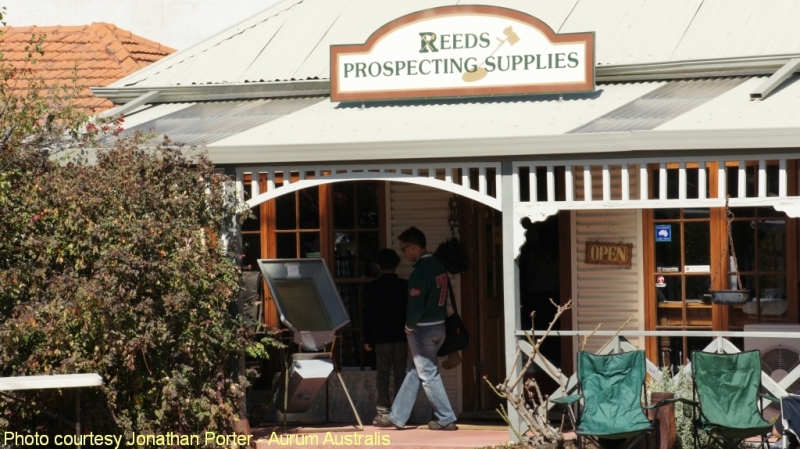-
Posts
19,765 -
Joined
Content Type
Forums
Detector Prospector Home
Detector Database
Downloads
Everything posted by Steve Herschbach
-

New Discovery Gold Show In Australia
Steve Herschbach replied to DolanDave's topic in Detector Prospector Forum
I don't think it is playing in the U.S.? Figures, as it looks like something I might watch. Premier in a few days in Australia; already on the air in the UK. The official website is at http://www.discoverychannel.com.au/shows/aussie-gold-hunters/ and http://www.questtv.co.uk/aussie-gold-hunters/ -
Coils are not a big money maker for detector manufacturers. Making them is a bit of a gamble as far fewer people invest in coils than you might imagine from reading the forums. This is an easy way for White's to get a few small coils out there to see what the demand is without investing in the design and tooling for a new coil themselves. The 6" round Eclipse concentric as a thick foam filled coil is not a good match for a machine that is intended to be put in the water. It is really the same problem White's faces with the 10" x 6" DD and 950 concentric coils for the MXS. They are old foam filled designs not really appropriate for the machines all terrain design intent. It's too bad White's did not get a new line of coils in place before the MX Sport came out, and now they are playing catch up.
- 13 replies
-
- mx5 mx7 mxsport
- coils
-
(and 1 more)
Tagged with:
-
The Mercury dime has always been one of my favorite coins. I did not know that the mint had restruck a limited number this year in pure gold to commemorate the 100th anniversary of the issuance of the coin. From http://catalog.usmint.gov/mercury-dime-2016-centennial-gold-coin-16XB.html Introducing the 2016 Mercury Dime Centennial Gold Coin. This is an event 100 years in the making. Beautifully struck in .9999 fine 24–karat gold, the Mercury Dime Centennial Gold Coin features Adolph A. Weinman’s original Winged Liberty design. This gold dime coin is commonly referred to as the Mercury Dime because of Liberty’s resemblance to the Roman god. Each coin contains one–tenth troy ounce of 24–karat gold, symbolic of the coin’s denomination of one dime, and is struck with a business strike finish. The obverse (heads) features a portrait of Liberty facing left, wearing a winged cap, with the inscriptions “LIBERTY,” “IN GOD WE TRUST,” “2016” and the artist’s initials, “AW.” The reverse (tails) includes a Roman fasces and an olive branch, symbolizing America’s military readiness and desire for peace. Inscriptions are “UNITED STATES OF AMERICA,” “E PLURIBUS UNUM,” “AU 24K,” “1/10 oz.,” and “ONE DIME.” Each coin is encapsulated and hand packaged in a custom–designed, black–matte hardwood presentation case and accompanied by a Certificate of Authenticity. In 2016, the U.S. Mint will mark the centenary anniversary of three numismatic icons with the release of the Mercury Dime, Standing Liberty Quarter, and Walking Liberty Half Dollar Centennial Gold Coins. The dime sold out and is now available for resale at up to double the issuance price. The new gold version of the Standing Liberty quarter just went on sale, also in limited quantities at http://catalog.usmint.gov/standing-liberty-2016-centennial-gold-coin-16XC.html?cgid=gold-coins#start=1
-

New Discovery Gold Show In Australia
Steve Herschbach replied to DolanDave's topic in Detector Prospector Forum
A review of the show at http://www.smh.com.au/entertainment/tv-and-radio/aussie-gold-hunters-is-a-reminder-of-the-romance-of-fossicking-for-treasure-20160902-gr76uh -
Having watched markets myself a long time I would say that the analysts here are every bit as good as any that think they know what the future brings.
-
Metal detectors is not a mass market and Minelab has a near monopoly on PI prospecting detectors. I can also assure you cost of production has no direct bearing on retail prices for many manufactured items. The idea is get the best margins you can. Minelab has maintained what for shareholders has been great pricing and margins. We also lived through a gold rush that supported the high prices. The bubble has burst and now Minelab PI prices are plummeting. Careful shopping in the U.S. can get you a brand new full warranty GPX 4500 for close to $2000.00 Even the GPZ took a $2000 price cut within a year of introduction. On the flip side GPZ sales have exceeded expectations so no feeling sorry for Minelab. No matter how you slice it, you can by more detecting capability right now for less money than ever. If you do not like big bucks the $499 segment is sizzling right now. New Teknetics T2 or Makro Racer for $499. Fisher F75 only $599 at the moment! We all agree it is what it is and things will happen in their own sweet time. Never underestimate however what newer more powerful batteries coupled with more powerful microprocessors can do, especially if you add the magic ingredient. That would be the new crop of young engineers coming on board who grew up with this stuff. I still think great things are ahead in the metal detecting world from a technical standpoint.
-
All research and development into mine detecting technology so far has eventually paid dividends in the consumer detecting end of things. One thing rarely seen in natural gold is straight lines. Picking up all metals but then seeing the outline of a square nail? Could be useful. Jewelry detecting. Can GPR be tuned to see through aluminum but highlight gold? I think that is very possible due to the density difference. Relic hunting as Rick notes has obvious applications. Yes, cutting edge and very expensive now, but the nature of electronics over time is more capability at lower prices. I sure am not holding my breath and may never see it in my lifetime. But ten years from now? Twenty years? Just knowing something is possible is half the battle.
-

300 Tons Of Nazi Gold
Steve Herschbach replied to auminesweeper's topic in Metal Detecting For Coins & Relics
Well, you will no doubt be surprised no train or gold was found.... http://www.nytimes.com/2016/08/25/world/europe/nazi-gold-train-poland.html?_r=0 http://biznespolska.pl/news/226617/Nazi-gold-train-search-abandoned---but-brings-in-£150-million-for-Polish-town.html -
From the Codan news release at http://www.codan.com.au/Portals/0/investorpubs/22 AXS Announcement - Minelab awarded $6.7m contract.pdf (copy below): "Cooperating with NIITEK Inc., the HDD will combine Minelab’s new Multiple Frequency Continuous Wave metal detection technology and NIITEK’s advanced ground penetrating radar." 31 August 2016 MINELAB AWARDED CONTRACT TO DEVELOP NEW HANDHELD DEVICE DETECTOR FOR THE AUSTRALIAN DEFENCE FORCE Minelab Electronics, a wholly owned subsidiary of Codan Limited, has been awarded a $6.7m contract by the Department of Defence to develop a new Handheld Device Detector (HDD). The funding received under this contract is to further develop a dual sensor metal detector which incorporates ground penetrating radar. It will partially offset the development costs of the product, and the project is expected to be completed by 2018. The development of the HDD builds on Minelab's success in technology development and product innovation for use in military programmes. Codan is particularly pleased to be of service to the ADF and to provide an enhanced capability that currently does not exist. Once the HDD enters into service with the ADF, we are confident that other militaries will seek the same level of capability, broadening our market for countermine products. The contract supports Codan's stated strategy of growing its profitability by improving and broadening our product offerings while ensuring our value propositions remain relevant and leading-edge. Previous to this award, in March 2014, Minelab was selected by the Department of Defence's Rapid Prototype Development and Evaluation (RPDE) programme to receive $1.0m in funding to further integrate metal detection and ground penetration radar technologies into a lightweight and compact mechanical platform. In December 2014, RPDE provided an additional $1.3m in funding, and Minelab subsequently produced an advanced prototype of the HDD. Cooperating with NIITEK Inc., the HDD will combine Minelab's new Multiple Frequency Continuous Wave metal detection technology and NIITEK's advanced ground penetrating radar. The HDD was designed taking into account the comprehensive requirements of the ADF, supplemented with feedback from Army User Groups. It will include advanced detection technologies as well as new standards of compactness and ergonomics. On behalf of the Board Michael Barton Company Secretary MORE INFORMATION ON THE NIITEK/MINELAB GROUNDSHARK Minelab Mineshark
-
Gold pans like metal detectors are just tools. I stuck with metal pans for a long time but now I prefer plastic. Some people still prefer steel. Those that prefer plastic pans have many different choices and preferences to choose from. Now there is another option to add to the list. Use the tool that best suits your needs and personal preferences.
- 9 replies
-
- videos
- california
-
(and 1 more)
Tagged with:
-
Here is the second video that focuses more on how to use the panning kit. Plus part one of my own Treasure Talk entry on the subject
- 9 replies
-
- videos
- california
-
(and 1 more)
Tagged with:
-

Steve's 2011 Australia Gold Adventure
Steve Herschbach replied to Steve Herschbach's topic in Detector Prospector Forum
We were up before dawn for a long day of driving ahead with about 400 miles to our first camp site. JP was in his rig and Chris and I in ours. I was designated driver and settled into driving a vehicle with everything reversed and on the opposite of the road from what I am used to. I would hate to do this in busy city driving but the leisurely pace of cross country driving made it easy going. The countryside started out as green farmland and forest that slowly turned to desert as we headed northeast towards Meekatharra. Except for stops to fill up on fuel and top off water supplies the drive was quite uneventful. The sun had set as we finally turned off the main road and followed a track in the dark to our first campsite. JP got his rig set up and Chris and I pitched our small tents. A long day and our first night of many in sleeping bags. We were up again before dawn and putting our loaner GPX 5000 detectors together. The machine was a new model at the time, and Jonathan gave us some recommended settings he had been using with success. Find Gold Timing, Gain of 14, Motion Slow, Stabilizer 8. I rarely strayed from these settings for most of my stay in Australia. JP gave us a brief idea where to look for gold in the area and he used a term we would hear a lot in the next month - "scattered gold". I wandered off to a likely looking spot and got my detector up and running and scanned away. My detector was only on a few minutes when I got my first signal, and what do I dig, but my very first Australian gold nugget! It was just a small piece of gold but the ease and quickness with which I found it seemed to bode well to me. Gold in the first few minutes, a month ahead and an expert guide. I just knew we were going to find a ton of gold!! Steve's First Australian Gold Nugget - Courtesy Jonathan Porter of Aurum Australis -
White's does of course continue to also make their own coils.... Here is that Faraday cage (still from second video):
- 13 replies
-
- mx5 mx7 mxsport
- coils
-
(and 1 more)
Tagged with:
-
I was a bit surprised a while back when White's started directly selling the DeTech 13" Ultimate as an official White's branded coil. https://www.whiteselectronics.com/product/detech-13-ultimate-dd-search-coil/ "Very odd" thought I, but I figured it was some kind of one off experiment. The DeTech coil is compatible with the MXT, M6, MX5, V3i, etc. Now it appears White's has turned to DeTech to produce their promised smaller coil for the MX Sport, a 7" round DD coil. From https://www.whiteselectronics.com/product/7-detech-mx-sport-coil/ "Tested and vetted by White’s Electronics engineers and field team, we are offering a limited supply first-run of only 10 coils. Limit one per order." I have used the DeTech 13" Ultimate myself for other brands, plus other DeTech coils and they have done well for me. I guess I am just surprised to see White's turning to a Bulgarian manufacturer to produce coils they once would have made in house. In this case it probably allows White's to get a small accessory coil to market quicker than might have been the case otherwise. People have been wanting something like the small 6" round Eclipse concentric for the MX Sport, but the problem with that coil is it is a thick foam filled coil not very amenable to underwater use.
- 13 replies
-
- mx5 mx7 mxsport
- coils
-
(and 1 more)
Tagged with:
-

Steve's 2011 Australia Gold Adventure
Steve Herschbach replied to Steve Herschbach's topic in Detector Prospector Forum
Another huge concern if spending a long time in Australia is the question of transportation. Options include both renting, or buying at the beginning of the trip and selling on departure. Renting is very expensive and so the buy and sell option is popular. There is a great thread on the subject here on the forum at http://www.detectorprospector.com/forum/topic/2182-renting-a-caravan-or-motorcoach-for-queensland/ In our case once again having JP as our guide paid dividends, as he had friends who were willing to rent us their Toyota 4-Runner for the duration of our visit, and with Chris and I splitting the cost it was extremely reasonable. Better yet I own a 4-Runner myself and so I am familiar with the vehicle. However, the driver seat is on the right hand side and the side of the road you drive on in Australia is reversed from what we do in the United States. Tips for driving in Australia We had a tight schedule on arriving in Perth. The first night we went straight to a hotel to rest up from our flight. The next day was slated to pick up the truck and do our shopping for supplies. Jonathan also had Chris and I lined up to do a little speaking engagement at Reed's Prospecting Supplies. Perth is the capital of Western Australia and with a couple million people is a large, vibrant city. Wikipedia entry about Perth. Since Perth is on the coast it has a warm and moderate climate not unlike the California coast though a bit wetter overall. Our hotel in Perth Downtown Perth, Australia Reed's Prospecting Supplies - Photo courtesy Jonathan Porter of Aurum Australis We had our little visit at Reed's which ended up being the subject of a Minelab Treasure Talk blog. The blog mentions me talking about snakes in Alaska but I was talking about being warned about them in Australia - no snakes in Alaska to worry about! The chats went well and I was able to pick up a Walco pick, which had become unavailable for general purchase in the U.S. Our shopping completed and truck loaded up, we were ready to head out early the next morning. We had a long drive to the Meekatharra area that with an early start should put us in camp that evening. -
That says GPX 4500. The SDC 2300 is a great little vacuum cleaner but it is limited by the small hard wired coil. If you want any serious depth on larger gold the GPX is the way to go. The GPX is easier than you might imagine - just use the stock recommended settings, maybe bump the gain up, and go find gold.
-
From Wikipedia: "Mponeng is a gold mine in South Africa's North West Province. It extends over 4 kilometres (2.5 mi) below the surface, and is considered to be one of the most substantial gold mines in the world. It is also currently the world's deepest mine. The trip from the surface to the bottom of the mine takes over an hour."
-

AT Gold And T2 Classic Strike Again
Steve Herschbach replied to Treasuredude's topic in Detector Prospector Forum
That's awesome Jeffery! Nice fat Jack Wade gold for sure. And as you know little need for a PI in many Alaska locations, especially in trashy deep tailing piles. Sure was a short trip though. You probably spent more time traveling than detecting. Good results especially considering you were new to the area with limited time. -

Steve & Others, Got The G2, How About The Infinium?
Steve Herschbach replied to Rod K's topic in Garrett Metal Detectors
Yes, the Infinium can hit a 0.3 gram target but do not expect much depth. You may need to nearly touch the gold with the coil. That will depend on the nugget shape and purity. Round and pure gold is good. Prickly low purity gold the same weight may be undetectable. PI detectors do not really get hotter as coil size gets smaller quite like a VLF. Even a large PI coil will be very hot right up against the coil winding. A mono is hotter than a DD because the same winding transmits and receives - in a DD one winding transmits and the other receives. A large round mono is like a hot hulu hoop with the best tiny gold sensitivity around the edges and less in the middle. By making the coil smaller the windings all draw closer together pulling the hot areas closer together, while reducing ground effects. Running a 14" mono on the Infinium will give you a double blip on a shallow small target as one edge passes over the target and then the other edge. It is a way of knowing you have a tiny surface target (true of other PI detectors also). Blah, blah, blah. Long story short the stock 14" x 10" DD is not half bad and has good ground coverage but the 8" mono generally goes as deep and is a tad hotter on small stuff, especially around the edges. The small DD coils have some advantages for being able to get into small spaces getting the coil closer to the target, which is half the battle. In my experience the 3"x7" is not any more sensitive than the 5" x 10" but will get in tighter locations. -
Ground balance numbers are only loosely related to the level of mineralization. The ground balance number indicates the type of mineral being encountered, not the amount of the mineral. Maghemite is about as bad as it gets, but it will deliver low ground balance numbers. There is a huge thread on the subject at http://www.detectorprospector.com/forum/topic/1599-gb-numbers-mineralization/ The auto sensitivity indications on the CTX are a better indicator, and mid to higher 20's (max is 30) indicates normal to milder ground. In general I would say ground for a VLF. Many gold bearing locations will be worse. Even this can be misleading. Our ground at Moore Creek, Alaska was quite mild, but had lot of magnetite laden hot rocks buried in that mild ground. Actually a bad scenario as the difference between the rocks and the ground itself really accentuates the hot rocks, which really are nothing but rocks that are significantly different than the ground they occur in. So while the ground was mild the hot rocks called for a GBPI detector. If you only look for nuggets once or twice a year than it may not be worth it, but for any serious prospecting I am a big believer in having both a VLF and GBPI along at all times. If nothing else one provides a backup for the other should a hardware failure occur. For what it is with the ATX is a great salt water jewelry detector for me at least, providing extra reasons for ownership.
-

Steve & Others, Got The G2, How About The Infinium?
Steve Herschbach replied to Rod K's topic in Garrett Metal Detectors
Killer price! -

Help With Metal Detector Choice
Steve Herschbach replied to Andrepidem's topic in Nokta / Makro Metal Detectors
The Racer 2 is more a general purpose detector geared for coins, relics, jewlery, and also possibly gold nuggets. The Gold Racer leans much more to the gold nugget and gold jewelry side of things but is also a decent coin and relic detector. Detailed Review Of Makro Gold Racer Announcing Makro Racer 2 Makro Gold Racer Versus Racer 2 Makro Racer 2 Versus Gold Racer On Buried Gold Nuggets The Makro Racer 2 is normally $749 and the Makro Gold Racer is normally $699 -
Minelab has released what has been dubbed the "lifestyle video" which leans more to being a short travel guide about Placer County than about the PRO-GOLD Panning kit specifically. I am sure a lot of people here will recognize many of the locations. It is actually quite a bit of work doing a video like this but we had fun also so I am fortunate to have taken part. Thanks Minelab! The video also has an accompanying blog post by Chris Ralph at Minelab Treasure Talk.
- 9 replies
-
- videos
- california
-
(and 1 more)
Tagged with:

